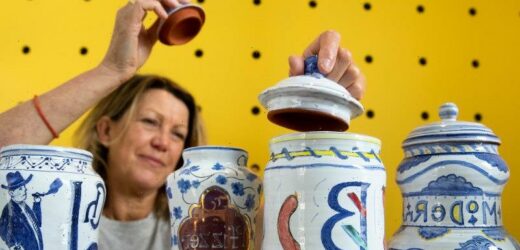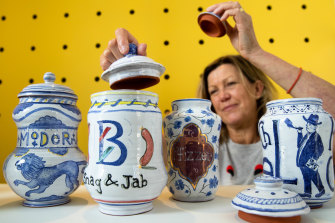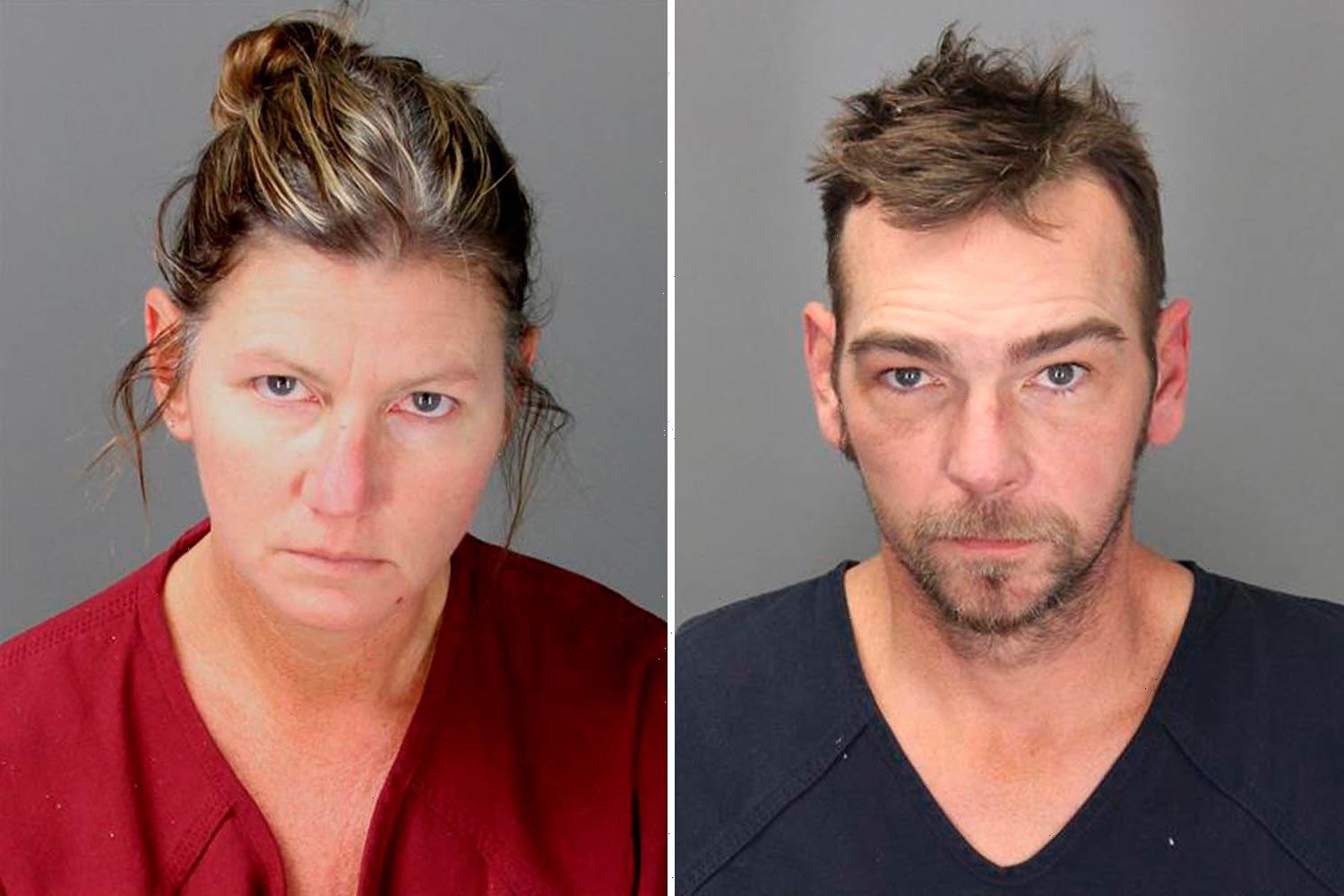Archaeologists of the future will gain an unique insight into these strange, fearful days should they unearth Sassy Park’s apothecary jars, inscribed with scenes of Bunnings’ sausage sizzles, a bellowing Prime Minister and the depressingly familiar words Astra Zeneca, Pfizer and Hydroxychloroquine.
With their roots in the Renaissance, the ornate COVID-inspired maiolica urns are the basis of Apothecary Now!, Park’s solo show at the Australian Design Centre’s Object Space. They are the artist’s take on the “tragi-comedy” played out in the news during the pandemic.
Sassy Park with some of her quirky ceramic jars.Credit:Janie Barrett
“It was so sad, but it was ridiculous and humorous listening to all this messaging that was coming out,” said Park, whose sly, poignant work is steeped in the unsung traditions of domestic ceramics from prehistoric pottery to Greek terracotta and English Staffordshire. “A lot of my inspiration came from my grandparents’ china cabinet and the special objects they kept but I’m always referencing the historical to tell a contemporary story.”
Just three years since completing a masters degree at the National Art School, Park has caught the attention of curators in Sydney and beyond. She’s been in seven shows this year, including the Muswellbrook Art Prize, in which she won the $10,000 ceramics award. Last year, she came second in the Meroogal Women’s Art Prize.
A portrait-on-clay of her daughter, Mara, is a finalist in the Portia Geach Memorial Award – a first for a ceramic artist – while three commemorative plates inspired by the pandemic have been collected by the Powerhouse Museum and displayed in its new survey exhibition, Clay Dynasty.
The museum’s curator of decorative arts and design, Eva Czernis-Ryl, admires Park’s versatility. She said she treads terrain similar to international stars Ai Weiwei and Grayson Perry, whose ceramic works cross the threshold from craft to art.
“Fifteen years ago, craft was a dirty word,” Czernis-Ryl said. “Even museums were changing the names from craft to design. Now there’s this huge interest in ceramics, which is a response to the preoccupation with technology, but it’s also a realisation that the boundaries between low and high art forms are disappearing.”
The pandemic has been a wellspring of inspiration for Park’s “souvenirs of the everyday”, which include shells decorated with the Ruby Princess and Crossroads Hotel. Her apothecary jars link today’s paranoia with the fears of the 16th century. “The Renaissance was a time of suspicion and faith and I think there’s a direct correlation between then and now, with this suspicion of new vaccines,” she said.
Park also explores the fragility of human nature with delicate figurines of unsung heroes such as the former Disability Discrimination Commissioner Graeme Innes, who appears in a tender small sculpture walking with his dog, Arrow. Her work is playful and staunchly feminist: she’s made three versions of a naked and vulnerable porcelain Julia Gillard, while a terracotta vase from 2019 is inscribed with “Stop Shagging Men”, courtesy of Senator David Leyonhjelm’s slut-shaming outburst to Senator Sarah Hanson-Young.
“When I make art, I want people to enter into it either through beauty or humour. I want people to engage with it,” Park says.
“Ceramics is such a great place for light-heartedness. It’s accessible and you can have fun with it. It can be art, it can be craft, it can be functional, it can be non-functional. It has allowed me to take risks.”
Working with clay certainly has its white-knuckle moments. “Life is disappointing and so is ceramics,” Park said. “You’re often disappointed with the cracks that appear in firing or a glaze that doesn’t go on properly. In a way, I’ve embraced these cracks, these failures. I’m not looking for perfection. I’m looking for beauty.”
Apothecary Now! is at the Australian Design Centre’s Object Space until January 25.
The Booklist is a weekly newsletter for book lovers from books editor Jason Steger. Get it delivered every Friday.
Most Viewed in Culture
From our partners
Source: Read Full Article



